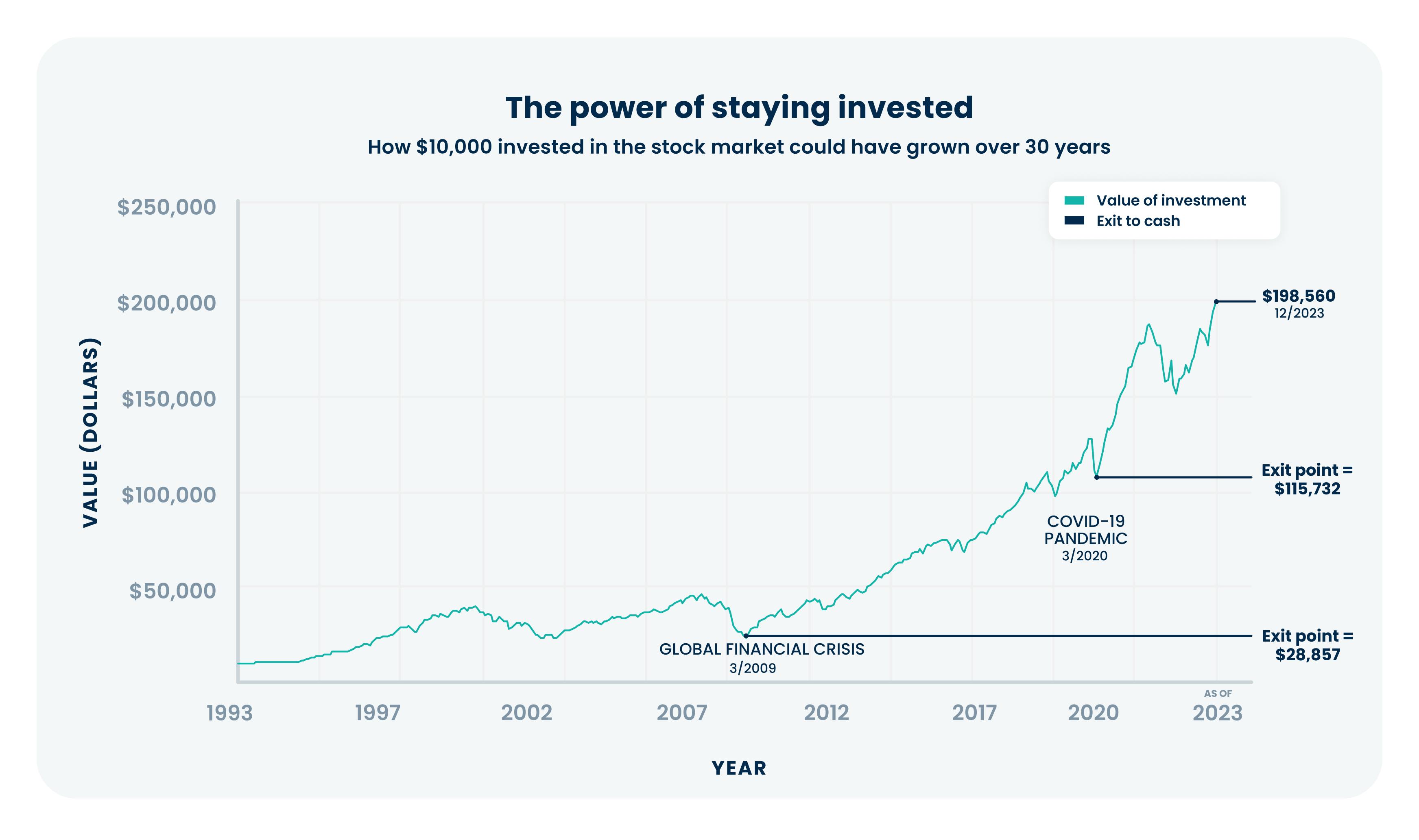Start now and save often
If you’re trying to save money, it can be wise to take advantage of compounding growth—and do it as soon as possible.
What’s compound growth?
A return that includes both the initial principal and the accumulated growth from previous periods. When there’s a return on investments, those returns are reinvested in the account and can then generate returns of their own.
How does compound growth work?
It’s helpful to understand how interest compounds to estimate how your money can grow. The more often your funds are compounded, the more compound interest you’re likely to earn—and the more likely your money can grow. Conversely, the slower the interest on your debts is compounded, the slower your debt can grow.
Example: A hypothetical mutual fund in a retirement account with an initial investment of $5,000 could become $40,582.49, assuming an average return of 7% compounded monthly over 30 years. If you added monthly contributions of $200, you could have $284,576.69 in 30 years time.¹
Want to try it out? Check out these handy compound growth calculators:
Consider compound growth a double whammy
Your money (that’s the growth your initial investment may have earned) can earn more money (that’s the compound growth), just by sitting in the account!
The power of staying invested
The chart below demonstrates how a hypothetical $10,000 investment could have grown in the stock market over 30 years, from 1992 until 2022. In this example, we use the S&P 500 Index as a proxy for an investment in the stock market.

Past performance, including hypothetical performance, is no guarantee of future results. Investing is subject to risk, including the risk of loss. S&P data © 2023 S&P Dow Jones Indices LLC, a division of S&P Global. All rights reserved. Indices are not available for direct investment; therefore, their performance does not reflect the expenses associated with an actual portfolio. Chart is for illustrative purposes only. See more information below.²
This chart does have its ups and downs, but these represent market fluctuations. If you had kept that money invested throughout this period, your $10,000 investment could have grown to over $173,000 by the end of 2022. However, if you got nervous during the 2009 financial crisis and decided to take all your money out of the market, your investment could have been worth only about $29,000 at that time.
If you kept your hypothetical $10,000 in the market over that period, the compound growth could have accounted for $163,000, or 94%, of the $173,000 total you might have ended up with. As the adage goes, it’s not about timing the market, but time in the market.
Low-cost 401(k) with transparent pricing
Sign up for an affordable and easy-to-manage 401(k).

Article By
Claudia NewmanClaudia Newman manages the Retirement Education team that helps onboard employees to their Human Interest plan and explains the benefits of a 401(k) plan by offering live training. She has been working in the 401(k) and retirement plan industry in several capacities, including relationship management, sales, and back-office support since 2010.


